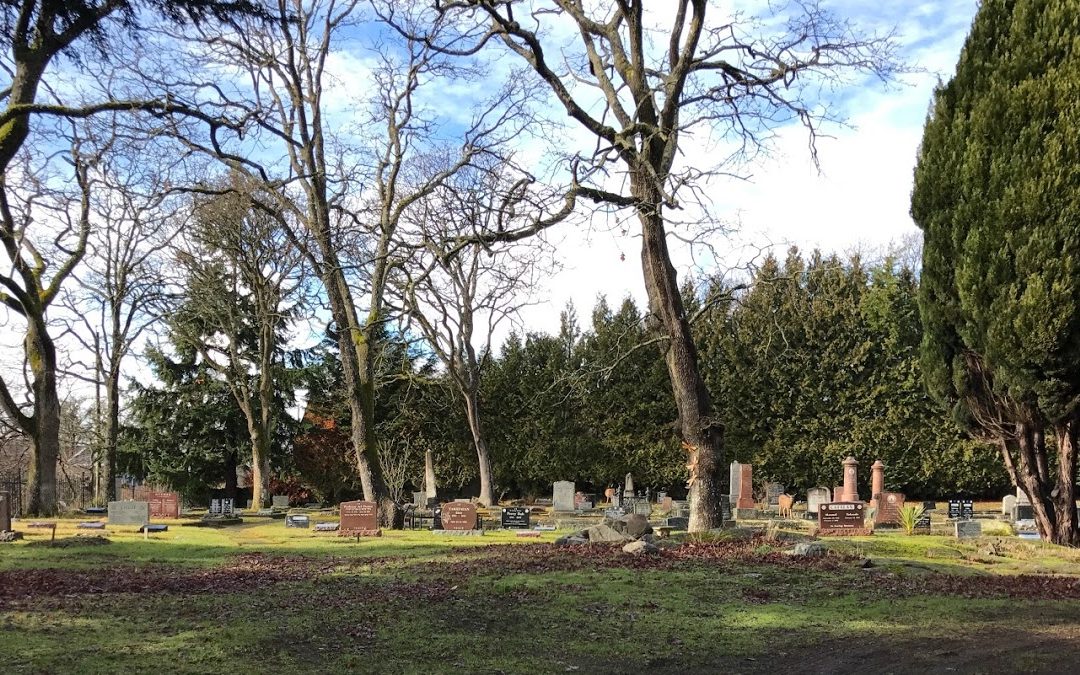Victoria’s Jewish cemetery is a space that sparks conversations on shared histories, community, land rights, and respect.
Guest post by Ryana E.
Intersecting communities
Have you ever wondered what Jewish and Indigenous communities have in common? Well one answer to this question, appears in an article by Crescenzi called Victoria’s Jewish Community explores how its history holds similarities with local First Nations.’
Published by Victoria News, this 2018 article looks at Richard Kool’s research on the Southern European Jewish people. For those of you unfamiliar with the name, Richard Kool is a well-known figure in Victoria’s Jewish community as he worked as Victoria’s Jewish cemetery director for many years. Dr. Kool is also personally connected to his research as his ancestors were Southern European Jewish people.
In tracing Jewish history, Kool explains how parts of Jewish history resemble aspects of Indigenous history as both communities have gone through similar hardships.
As the article points out, both communities have faced horrible mistreatment such as being forced to take English names or abandon their culture. Both communities have also had many lives taken from them in events such as the Holocaust and residential schools.
Learning opportunities
Anyone can benefit from reading Crescenzi’s article because it teaches us two things:
- Canada has a long history of bringing harm to minority communities and trying to erase their identities.
- Minority communities are incredibly strong. There is strength in Indigenous and Jewish communities as both are alive and thriving today.
Similar yet different
Although Jewish and Indigenous communities have things in common, we need to remember they’re still different communities. Both Indigenous and Jewish communities have unique histories, beliefs, and practices.
What are some of these differences you ask? Well, one way these communities are different is in their connection to the cemetery land.
At first glance, when you look at the image below you might think Victoria’s Jewish Cemetery simply exists on the grassy lands of Victoria. Yet, understanding the lands cemeteries stand on is more complicated than you might think.
What does this mean? Well, as the next section will explain, we know that Victoria’s Jewish cemetery exists on Indigenous lands.

An assortment of gravestones at Victoria’s Jewish Cemetery. Image from: https://oldcem.bc.ca/cem/cem_je/
The lands we work on
A crucial part of working in a cemetery is learning about the lands you are on. One way we can learn about the land is by asking ourselves questions such as who is buried on these grounds? Or how many square feet is a plot of land?
Yet, one important question that many of us forget to ask ourselves is whose land am I on?
We need to ask this question because a lot of people assume that cemetery lands belong to the cemetery. Yet, as people living on Turtle Island (aka Canada), we know that Indigenous peoples are the rightful residents of the land. Everyone else who lives on Turtle Island is a settler.

A multi-colored map of the many Indigenous lands that make up Turtle Island. Image from: https://nativenewsonline.net/currents/whose-land-are-you-on-this-app-will-show-you-which-indigenous-territory-you-re-on
Whose land are you on?
Using tools such as Native Land Digital’s website can help you familiarize yourself with whose Indigenous lands you are on. Victoria’s Jewish cemetery, as its website points out, is located on the traditional lands of the lək̓ʷəŋən people.
It is important to know whose land you are on so that we can pay the proper respects. As the beginning article notes, Victoria’s Jewish community respects the land by having the congregation Emanu-El start each Shabbat with a prayer that recognizes the local Indigenous peoples.

A red, yellow, and black colored turtle island next to the words ‘Whose Land.” Image from: https://www.whose.land/en/
Main takeaways
What have we learned? We have learned that every community is unique. Yet, from reading Crescenzi’s article, we saw that sometimes different communities can share similar struggles and strengths. We also learned that despite Canada’s mistreatment, Jewish and Indigenous communities are alive and thriving today.
We have also come to see that in every space we enter, there are certain things we must remember. Whenever we enter a community, we should always recognize and learn about its history. And when we enter a cemetery, we should always ask ourselves whose lands we are on and pay our respects.
So, the next time you enter a cemetery, remember to respect the graves you are looking at, the lands you are standing on, and the communities you are in.
References
Crescenzi, N. (2018, November 22). Victoria’s Jewish community explores how its history holds similarities with local First Nations’. Victoria News. https://www.vicnews.com/news/victorias-jewish-community-explores-how-its-history-holds-similiarities-with-local-first-nations-46614
Native Land Digital. (n.d.). https://native-land.ca/
The Jewish cemetery of Victoria, British Columbia. (n.d.). History. https://jewishcemeteryofvictoriabc.ca/history/
